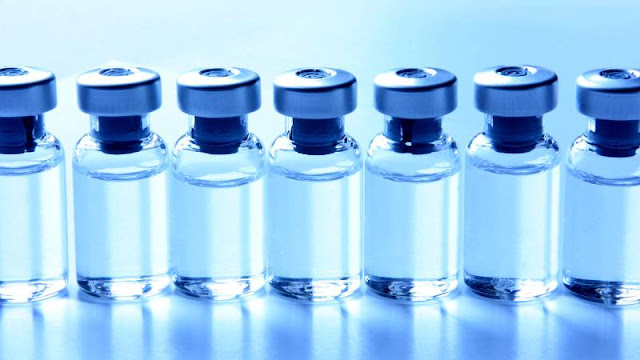decoding urine colors guide to your health status
Urine, often dismissed as a mundane bodily function, is a valuable indicator of our health. Its color can reveal vital clues about our well-being. In this comprehensive guide, we'll explore the spectrum of urine colors and what each hue may signify for your health. Understanding these subtle signals can empower you to take proactive steps towards a healthier lifestyle.
The Normal Palette
In its natural state, urine is a pale yellow color, a sign
of proper hydration and a healthy balance of nutrients. This transparent shade
indicates that your kidneys are efficiently filtering waste products from your
body. However, deviations from this norm can indicate underlying health issues.
Straw Yellow to Amber: The Healthy Glow - A pale to medium
yellow hue is the ideal range, showcasing a well-hydrated and healthy
individual.
Colorless: Hydration Hero - If your urine appears almost
clear, it's a sign that you are well-hydrated. Adequate water intake helps
flush toxins from your body.
Red Flags
While some changes in urine color are normal and benign,
certain hues should raise concern.
Bright Yellow/Neon: Vitamin Overload or Dehydration - An
intense yellow color may indicate excessive consumption of certain vitamins or
dehydration. Adjusting your vitamin intake or increasing water consumption can
help restore balance.
Orange: Watch Out for Medications - Certain medications,
like antimalarials or laxatives, can turn your urine orange. However, if this
occurs unexpectedly, consult a healthcare professional as it might be a sign of
liver or bile duct issues.
Pink to Red: Blood in Urine (Hematuria) - One of the most
concerning colors, pink or red urine may indicate blood. Causes range from
urinary tract infections to kidney stones. Immediate medical attention is
crucial to identify and address the underlying issue.
Brown: Muscle Breakdown or Liver Problems - Dark brown urine
may signal muscle breakdown or liver problems. It could be a result of intense
exercise, but if not, it's essential to consult a healthcare provider.
Green or Blue
While uncommon, green or blue urine can be startling. In
most cases, this discoloration is linked to specific foods, medications, or
medical conditions. For instance, consuming foods with blue or green dyes might
impart a similar color to your urine. Certain medications or rare genetic
conditions can also cause this unusual hue.
Unveiling the Secrets: Whitening Benefits to Cure Dark
Underarms in One Week
Dark underarms can be a source of self-consciousness for
many individuals, affecting their confidence and self-esteem. Various factors
contribute to the darkening of the underarm skin, including shaving, dead skin
cell accumulation, excessive sweating, and the use of certain deodorants. While
achieving significant lightening in just one week may be a challenging goal,
incorporating a targeted and consistent approach can lead to noticeable
improvements. In this comprehensive guide, we explore the whitening benefits
and strategies to cure dark underarms in a week.
Understanding the Causes:
Before delving into solutions, it's crucial to understand
the common causes of dark underarms. Friction from tight clothing, frequent
shaving, and the accumulation of dead skin cells are among the primary
culprits. Additionally, hormonal changes, obesity, and certain medical conditions
can contribute to this issue. Tailoring the approach to address these specific
causes is key to achieving effective and lasting results.
Effective Whitening Ingredients:
Lemon Juice:
Lemon juice is renowned for its natural bleaching
properties. Its high citric acid content helps exfoliate dead skin cells and
lighten the skin.
Application: Squeeze fresh lemon juice and apply it to the
underarms for 10-15 minutes before rinsing with lukewarm water.
**Potato:
Potatoes contain an enzyme called catecholase, known for its
skin-lightening properties.
Application: Rub thin slices of potato on the underarms or
apply potato juice for 20 minutes before washing off.
**Turmeric:
Turmeric has anti-inflammatory and antioxidant properties.
It can help reduce pigmentation and lighten the skin.
Application: Mix turmeric powder with yogurt or honey to
create a paste. Apply for 15-20 minutes and rinse thoroughly.
**Baking Soda:
Baking soda acts as a gentle exfoliant, helping remove dead
skin cells and unclog pores.
Application: Create a paste by mixing baking soda with water
and apply it to the underarms. Gently scrub and rinse after 5-10 minutes.
**Cucumber:
Cucumber has a cooling effect and contains natural bleaching
agents.
Application: Apply grated cucumber or cucumber juice to the
underarms and leave it on for 20 minutes before washing off.
Strategies for Quick Results:
Exfoliation:
Regular exfoliation is essential to remove dead skin cells
that contribute to dark underarms. Use a gentle scrub or a homemade exfoliating
mixture to cleanse the underarms.
Hydration:
Staying hydrated promotes overall skin health. Drink an
adequate amount of water daily to maintain skin elasticity and reduce the
appearance of dark spots.
Avoiding Irritants:
Certain deodorants and antiperspirants can contain harsh
chemicals that may contribute to skin darkening. Opt for natural or
hypoallergenic alternatives.
Natural Lightening Masks:
Incorporate natural lightening masks into your routine, such
as a mixture of yogurt and honey, to nourish the skin and promote a lighter
complexion.
Wear Loose Clothing:
Tight clothing can contribute to friction and irritation.
Opt for loose, breathable fabrics to reduce friction and allow the skin to
breathe.



